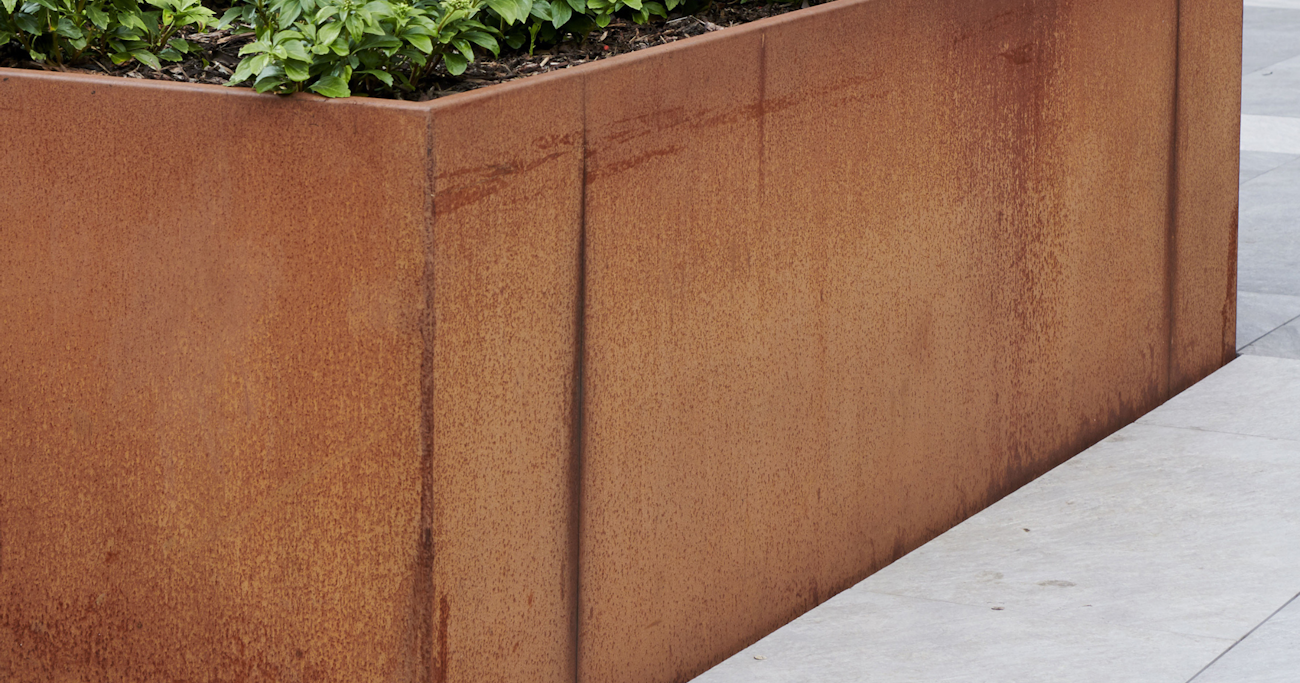CorTen Steel - Attractive and Enduring

Weathering steel was originally developed in 1930’s America as a pragmatic solution to corrosion in railroad coal wagons, after it was discovered that when a fine coating of oxidation developed on certain steel alloys it paradoxically protected the steel from further corrosion. This particular type of steel alloy was also known for its tensile strength, and with two qualities that carbon steel just couldn’t match, the metal was soon given a special name for a special product. Taking the COR from corrosion resistance and the TEN from tensile strength, CorTen steel was born.
But it wasn’t long before architects began to notice the aesthetic qualities of CorTen steel as much as its structural strength. Falling in love with the earthy orange-brown patina that develops over time, architect Eero Saarinen first used it for architectural purposes on the now-famous John Deere headquarters in Moline, Illinois. More than sixty years on, the building still stands as sturdy as the day it was raised, a testament to CorTen’s durability.
Many more projects followed, from public buildings to private homes, soaring towers to squat schoolhouses, as CorTen evolved from a radical newcomer to a respected elder in architectural design. And as the lines between construction and landscaping have become ever more blurred, so has CorTen entered the regular playbook of garden designers.
Multiple landscaping uses
For landscape artists, CorTen is versatile both in aesthetic appeal and technical capability.
It seems quite at home in a country garden where its earthy, organic tones merge seamlessly with the organic tones of soil and wood bark and quietly complement lavish displays of flowers and foliage, but is also capable of an industrial vibe that is perfect for urban landscaping, where it will stand shoulder to shoulder with brick and concrete.
Its high tensile strength means that CorTen can be thin and flexible without losing strength and can be cut, fabricated and welded as easily as any other mild steel. This makes it a popular material for large planters and raised flowerbeds, water features and art installations.
CorTen presents no danger to plant or wildlife, and in fact has some environmental benefits as it absorbs high levels of carbon dioxide during its patination process.
This versatility is evident in the increasing popularity of CorTen planters and planter systems designed and manufactured by Raaft, as a quick scroll through some of our projects will show.

Ageing gracefully
The patination process that CorTen steel undergoes turns an essentially inanimate object into something more like a living organism. A dull grey when first fabricated, Raaft planters gradually acquire their own looks and personality with a smorgasbord of tones and textures, each influenced by the planter’s unique surroundings.
In areas of higher airborne pollution, substances such as sulphur will accelerate the weathering process and produce a darker patina than in less polluted rural areas. Sunlight also wields a broad brush across this steely canvas and in the northern hemisphere, south- and west-facing surfaces that get more sun will develop a smoother and more uniform patina than north- and west-facing surfaces, where prolonged shade and damp will give the patina a granular texture.
As nearby and overhanging objects reflect light and warmth or cast shadows or water droplets on the surface of the planter they will each leave their indelible touch in the light and dark patches, stains and streaks that make each planter truly unique.
A blot on the landscape – and how to avoid it
It might almost seem that CorTen is the perfect material for landscape gardening, but even favourite children have their flaws. With CorTen, this is an annoying habit of rust-tinged water seeping from the metal onto surrounding surfaces during the patination process and permanently staining them. If CorTen has been paired with pristine white marble or creamy Portland stone, this can be quite distressing.
To reduce the risk of staining we apply oxidation accelerators to our CorTen planters during manufacturing. This reduces the surface maturing time of the steel and thus the window of opportunity for the rust stain to leach into surrounding surfaces once the planters are installed.
We can also supply a chemical solution that can be applied after installation to speed up this process. This should be carried out when the steel is cool, as warmth will cause the solution to evaporate before it can fully take effect, so if you’re applying it during the summer it’s best to tackle it early in the morning.
After cleaning the CorTen steel with water the chemical solution is applied using a standard garden spray canister and left for about ninety minutes. A second coat is then applied and left for about forty five minutes before the surface is again cleaned with water. Repeat this process once or twice a week.
The chemical treatment won’t fully oxidise the surface but will speed up the process and achieve a cleaner finish that is less likely to damage surrounding surfaces.

CorTen steel planters: The Raaft way
If you are an architect looking to incorporate CorTen steel into your next project, why not consult Raaft about our corten steel planters.
At Raaft, we offer roof terrace systems designed for life. Our range of durable terrace products come in many different styles, colours and finishes to suit your needs so you can build what’s right for your space. See the endless possibilities available to you with the Raaft terrace system and talk to a technical expert with experience of industry best practice to begin your roof terrace journey.